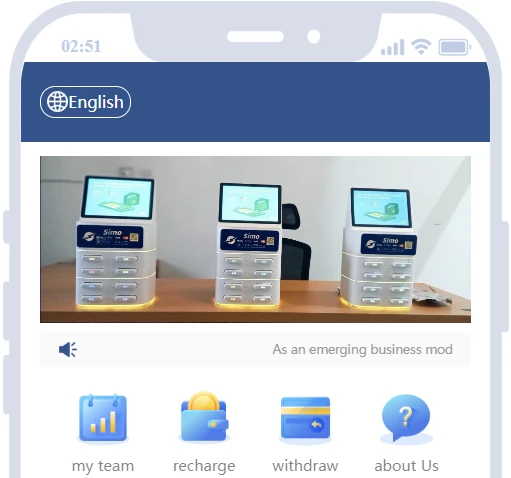Simo Power Review: Charging station “click a button” Ponzi
 Simo Power fails to provide ownership or executive information on its website.
Simo Power fails to provide ownership or executive information on its website.
Simo Power’s website domain (“simopower.com”), was privately registered on March 22nd, 2025.
As always, if an MLM company is not openly upfront about who is running or owns it, think long and hard about joining and/or handing over any money.
Simo Power’s Products
Simo Power has no retailable products or services.
Affiliates are only able to market Simo Power affiliate membership itself.
Simo Power’s Compensation Plan
Simo Power affiliates invest tether (USDT). This is done on the promise of advertised returns:
- Simo-1 – invest 35 USDT and receive 2.66 USDT a day
- Simo-2 – invest 100 USDT and receive 7.7 USDT a day
- Simo-3 – invest 200 USDT and receive 15.6 USDT a day
- Simo-4 – invest 500 USDT and receive 39.5 USDT a day
- Simo-5 – invest 1000 USDT and receive 80 USDT a day
- Simo-6 – invest 2000 USDT and receive 162 USDT a day
- Simo-7 – invest 4000 USDT and receive 328 USDT a day
- Simo-8 – invest 8000 USDT and receive 664 USDT a day
- Simo-9 – invest 16,000 USDT and receive 1344 USDT a day
- Simo-10 – invest 32,000 USDT and receive 2720 USDT a day
Simo Power pays referral commissions on invested USDT down three levels of recruitment (unilevel):

Note that specific referral commission rates on each level are not disclosed.
Joining Simo Power
Simo Power affiliate membership is free.
Full participation in the attached income opportunity requires a minimum 35 USDT investment.
Simo Power Conclusion
Simo Power is yet another “click a button” app Ponzi scheme.
Simo Power’s “click a button” Ponzi ruse is device charging stations.

The assigned task in Simo Power is “orders”. This sees Simo Power affiliate investors log in daily to “click a button”.
Clicking the button daily qualifies Simo Power investors to receive advertised daily returns.
Beyond that clicking a button inside Simo Power does nothing. There is no external revenue; all Simo Power does is recycle newly invested funds to pay earlier investors.
Simo Power is part of a group of “click a button” app Ponzis that emerged in late 2021.
Examples of already collapsed “click a button” app Ponzis using the same charging station ruse are TRX ChargePoint, EVChargezus, Blink Charging.
Since 2021 BehindMLM has documented hundreds of “click a button” app Ponzis. Most of them last a few weeks to a few months before collapsing.
“Click a button” app Ponzis disappear by disabling both their websites and app. This tends to happen without notice, leaving the majority of investors with a loss (inevitable Ponzi math).
As part of a collapse, “click a button” Ponzi scammers often initiate recovery scams. This sees the scammers demand investors pay a fee to access funds and/or re enable withdrawals.
If any payments are made withdrawals remain disabled or the scammers cease communication.
Organized crime interests from China operate scam factories behind “click a button” Ponzis from south-east Asian countries.
In September 2024, the US Department of Treasury sanctioned Cambodian politician Ly Yong Phat over ties to Chinese human trafficking scam factories.
Trafficked victims report they were forced to scam under threat of violence and having their organs harvested.
Through various companies he owns, Phat is alleged to shelter Chinese scammers operating out of Cambodia.
Myanmar claims to have deported over 50,000 Chinese scam factory scammers since October 2023. With “click a button” app scams continuing to feature on BehindMLM though, it is clearly not enough.
In late January 2025, Chinese ministry representatives visited Thailand. The stated aim of the visit was to tackle organized Chinese crime gangs operating from Myanmar.
In early February 2025, Thailand announced it had cut power, internet access and petrol supplies to Chinese scam factories operating across its border with Myanmar.
As of February 20th, Thai and Chinese authorities claim ten thousand trafficked hostages had been freed from Myanmar compounds.
Also on February 20th, five Chinese crime bosses were nabbed in a wider raid of four hundred and fifty arrests in the Philippines.
On March 19th it was reported that, despite the recent raids and arrests, “up to 100,000 people” are still working in Chinese Myanmar scam factories.
Regardless of which country they operate from, ultimately the same group of Chinese scammers are believed to be behind the “click a button” app Ponzi plague.


What about Simopower can’t I invest?
Nothing is stopping you from investing in braindead app Ponzis and losing your money. Have at it.